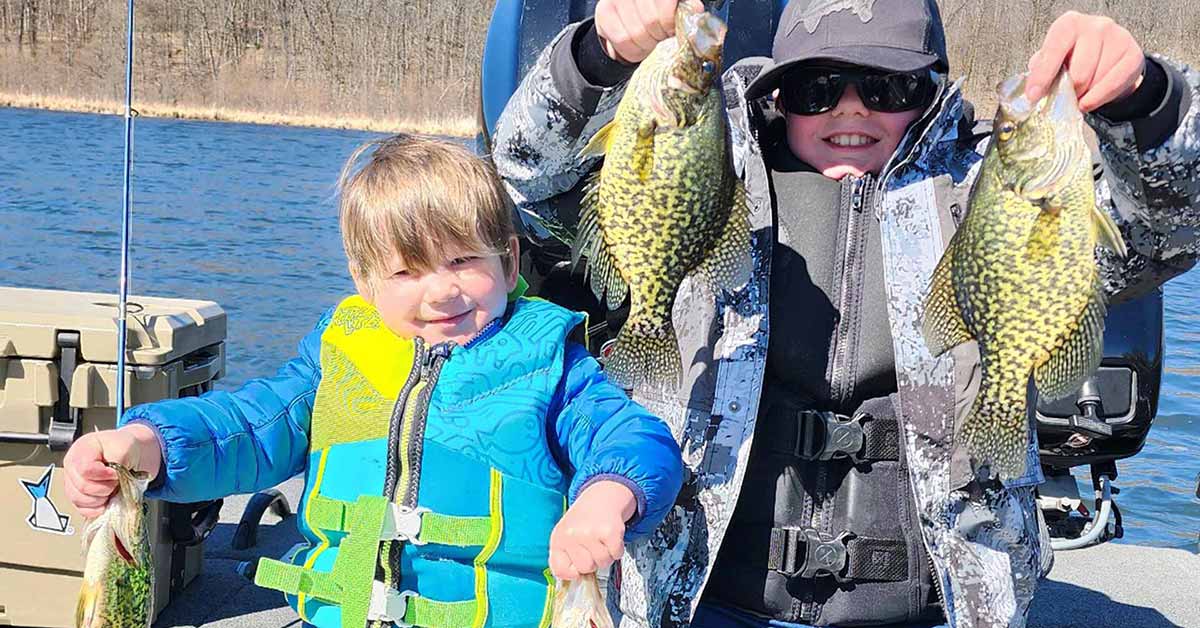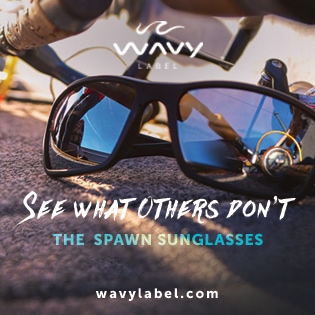There is often a period between last ice and ice off when anglers cannot reach the lakes. Fishing transition periods like that can lead you to some great and unexpected bites.
Fishing Transition Periods
So, what’s an angler to do during the transition between ice and open water, when it’s unsafe to attempt walking on crusty remnants of darkening ice, yet lakes are too filled with shifting ice floes to risk launching your boat?
That’s easy. Go somewhere else, and do something differently!
First tip: If you want to continue ice fishing, travel further north, where the ice may yet be firm enough for safe exploration. Call ahead, speak to folks you trust, and solicit their best opinion.
If it’s risky business, consider going even further north to colder climates, where the ice takes longer to recede. Lake Winnipeg, Manitoba walleyes, anyone?

Second, go further south, where the ice has already melted, and open-water angling is already in full swing…or at least being probed by their first wave of impatient, hardcore fisherfolk. Panfish are already biting on bobber rigs in the back bays of small natural lakes.
Rivers where the walleye season remains open year-’round are great early options, particularly within a mile or so of dams. Break out the jigs. Time’s a-wasting.
Carry waders in your trunk or the back of your truck, ready to be deployed at the slightest opportunity. Boot up, and walk the banks of rivers flowing into the Great Lakes. A long float rod, and a few tiny jigs suspended below slender bobbers will float your bait offerings above and past the eyes and noses of early spring steelhead and brown trout.
Where you can, wade out and cast a neutrally-buoyant minnowbait for walleyes, preferably at dusk where the current of a river flows into a lake. Let the fish come to you, rather than vice versa.
Do you have access to a kayak, float tube or canoe? They’re a lot easier to slide into backwaters and bays early in the season. Your full-size boat can come later.
In fact, perhaps the easiest thing you can do is simply park your vehicle, walk down to the back end of a bay, channel, bridge, riverbend, tributary intersection, dam, causeway or breakwater, and make a few casts. Even if you don’t know what may or may not be swimming offshore.

You see, shallow, warmer, protected water naturally attracts fish of all species in early spring.
Similarly, seeing open water for the first time gets your blood pumping, encouraging you to grab a rod, a couple of lures or baits, and at least see if your line is still good enough to spool off the reel.
In the process, you work out some of the kinks, get the feel of things again, and if you’re lucky–or better yet, know what you’re doing–chances are you’re going to catch something in the process. And those first few tugs on the line feel mighty good after a long, cold northern winter.
What’s that you say? There’s no place to fish yet? Look around. Chances are there are actually too many places for you to fish during the brief transition between ice and open water. If so, you might find yourself in no rush to hook up the boat. At least for a little while!










